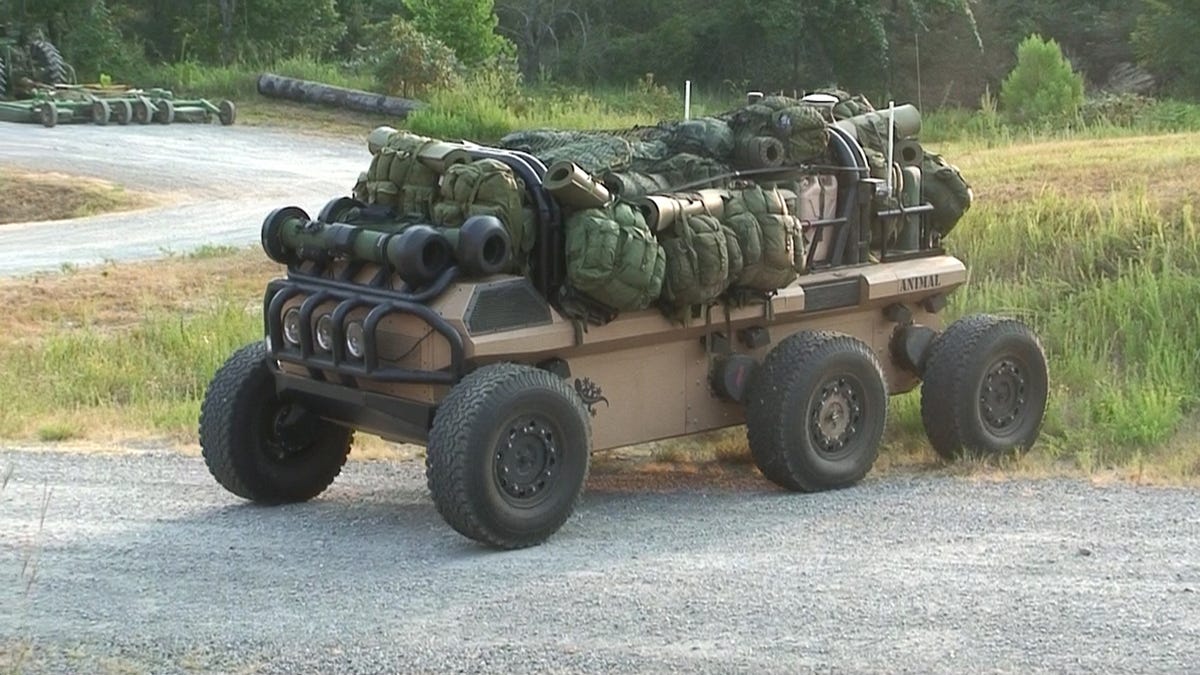Reality check for the Army's high-tech makeover
The U.S. government is spending $3.5 billion this year alone on the Future Combat Systems program, and there's no guarantee that the network at its core will ever see action.

The Pentagon is no stranger to overpriced equipment and cost overruns, but it may never have seen a program quite like the U.S. Army's long-running and hugely ambitious Future Combat Systems initiative.
For this fiscal year alone, Congress has allocated some $3.5 billion in funding for FCS, en route to what is expected to be a total tab of $160 billion or so by the middle of the next decade. But $160 billion doesn't buy what it used to: the Government Accountability Office has been lamenting recently that the overall estimated FCS tab remains at that level even as pieces have been lopped out of the program.
On top of that, the Army is apparently looking for an additional $251.8 million in funds for the current fiscal year to help speed delivery of some components. That money, according to a story this week in the Army Times, would allow the Army to "introduce some of the manned vehicles a year or two earlier, speed up delivery of networked sensors and UAVs, and field the first FCS brigade combat team in 2013, two years early."
That new money, which would come out of some other research programs, is somewhat more than the $230 million that Congress cut out of the budget for fiscal 2008. Lest the congressional budget minders take issue with that, the Pentagon last week sent FCS representatives to Capitol Hill for another in a continuing series of dog-and-pony shows on the benefits of high-tech battlefield gear, including the FCS cousin known as Land Warrior. (The gear is on display there through this week.)
FCS is the Army's grand plan for becoming a 21st century fighting force in which superior information trumps mass of forces, and it comprises a wide array of systems, all of them still early in the R&D or prototyping stages. Key elements include artillery pieces, unmanned aerial vehicles, robots, software-based radios, battlefield sensors, and a high-speed wireless network to tie them--along with individual soldiers--all together.
The real challenge for FCS isn't just in developing those individual pieces. Eventually, it will be getting them all to work in unison--no small feat for a system that will encompass voice, data, and video communications among ground, aerial, and satellite assets.
"This new way of fighting can be achieved only if the data can be made available in near real-time at sensor processors, at the battlefield command nodes, and at the lethal systems," the GAO wrote in a March report (PDF).
But that real-world test remains quite a ways in the future. In the shorter term, the concern is much more about taming the R&D sprawl. "Today, the FCS program is about halfway through its development phase, yet it is, in many respects, a program closer to the beginning of development," the GAO wrote in a report (PDF) issued last week. "This portends additional cost increases and delays as FCS begins what is traditionally the most expensive and problematic phase of development."
Perhaps most significant is this statement from the April report: "It is not yet clear if or when the information network that is at the heart of the FCS concept can be developed, built, and demonstrated."
How complex an undertaking is this? Consider the network configuration: "Current plans call for the network supporting a BCT (brigade combat team) to include more than 5,000 nodes on over 1,500 radio sets running at least four different advanced networking waveforms, supporting networks and sub-networks interconnected by gateways, and carrying 3 million identified, point-to-point information exchange requirements," according to the March report. And all that would have to work over a wireless network in constantly shifting, unpredictable battlefield conditions.
A whole host of critical FCS technologies are also still "immature," the GAO said, "(and) software development is in its early stages." The estimate for the software code expected for full-fledged FCS now stands at 95.1 million lines, three times the estimate from five years ago and, the GAO wrote, "the largest software effort by far for any weapon system." (By comparison, Windows XP is estimated to have roughly 40 million lines of code, and Vista, more than 50 million.)
The FCS program faces a congressionally mandated "go/no-go" milestone review in 2009 in order to justify continuation; critera for that decision are to be set by the end of July this year. If it clears that hurdle, a planned production decision is scheduled for 2013.
Meanwhile, the Pentagon has been working on "low-rate spin-outs" of some FCS components, such as unattended ground sensors, to get that gear into the hands of soldiers today. It's just an educated guess, but we're likely to see a lot more of that in the next few years.

